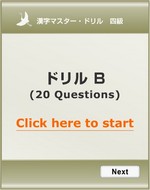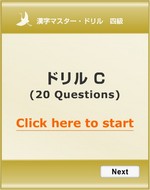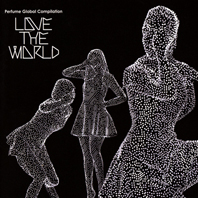Part 4: 年 週 朝 昼 夕 方 夜 先 来 毎
年 : ネン、とし
|
Meaning: year, age
|
Click to see the stroke order animation.
| Word | Reading | Meaning | Class |
|---|---|---|---|
| 年 | とし | age | n |
年は おいくつ ですか。 How old are you? |
|||
| ~年 | ~ねん | _ years | suffix |
Used for date and for duration. 1995年<year 1995>, 2008年<2008>, なん年<what year?> 1年<1 year>, 2年はん<2 and half years>, なん年<how many years?> For duration, 間 is often added. 5年間<5 years> Irregular pronunciations: 4年(よねん), 7年(ななねん or しちねん), 9年(きゅうねん or くねん) |
|||
| 今年 | ことし | this year | n |
| [去]年 | きょねん | last year | n |
週 : シュウ
|
Meaning: week
|
| ~週間 | ~しゅうかん | _ weeks | suffix |
1週間<1 week>, 2週間まえ<2 weeks ago>, 何週間<how many weeks?> 間 is always added for duration. Not 1週, 2週... Irregular pronunciations: 1週間(いっしゅうかん), 8週間(はっしゅうかん), 10週間(じゅっしゅうかん) |
|||
| 今週 | こんしゅう | this week | n |
朝 : チョウ、あさ
|
Meaning: morning Shape: 十 / ten + 日 / sun + 十 / ten + 月 / moon
|
| 朝 | あさ | morning | n |
| 朝[御飯] | あさごはん | breakfast | n |
| 今朝 | けさ | this morning | n |
昼 : チュウ、ひる
Meaning: day time Shape: 尺 + 日(sun) + 一(one)
|
| 昼 | ひる | daytime | n |
| 昼[御飯] | ひるごはん | lunch | n |
夕 : セキ、ゆう
|
Meaning: evening
|
| 夕[飯] | ゆうはん | dinner | n |
ばんごはん(晩御飯) also means dinner. |
|||
方 : ホウ、かた
|
Meaning:
|
| 方 | かた | person (polite) | n |
あの方は どなたですか。<Who is that person?> |
|||
| 夕方 | ゆうがた | (early) evening | n |
| 方 | ほう | direction, the one (of options) | n |
かれは みなみの方へ いきました。<He went to the southern direction.> バスより でんしゃの方が はやいです。<Train is faster than bus.> |
|||
夜 : ヤ、よ、よる
Meaning: night Shape: なべぶた + 人 / person + 夕 / evening + diagonal line
|
| 夜 | よる | night | n |
| 今夜 | こんや | tonight | n |
Notes
In general, 夕方 means early evening around sunset, and 夜 is after sunset till dawn.
夜 and ばん(晩) both mean night time.
夕はん and ばんごはん, 今夜 and 今ばん mean the same.
先 : セン、さき
|
Meaning: ahead, previous
|
| 先 | さき | before, ahead, first | n |
先 is used for time, for place and for order. 先週 としょかんへ いきました。<I went to the library last week.> ぎんこうは この先に あります。<The bank is further ahead.> 先に どうぞ。<After you. Please go first.> |
|||
| 先週 | せんしゅう | last week | n |
| 先月 | せんげつ | last month | n |
来 : ライ、きた(す)、きた(る)、く(る)
|
Meaning: to come
|
| 来る | くる | to come | v |
| 来週 | らいしゅう | next week | n |
| 来月 | らいげつ | next month | n |
| 来年 | らいねん | next year | n |
| さ来年 | さらいねん | year after next | n |
毎 : マイ
|
Meaning: every
|
| 毎日 | まいにち | every day | n |
| 毎週 | まいしゅう | every week | n |
| 毎月 | まいつき, まいげつ | every month | n |
| 毎年 | まいとし, まいねん | every year | n |
| 毎朝 | まいあさ | every morning | n |
| 毎[晩] | まいばん | every night | n |
Notes
There are two ways of reading 毎月 - まいつき and まいげつ. In most cases, まいつき is used.
There are two ways of reading 毎年 - まいとし and まいねん. まいとし is used more often.
Writing Practice
Printable writing practice sheet is available at Kanji Writing Practice page.
Stroke Order Rules (1)
It is important to write with the correct stroke order. It's natural, and you can write quickly.
Wrong stroke order often results improper shape of character.
Here are some general guidelines.
 |
The upper part first, then the lower part(s). |
|---|---|
 |
The left side part first, then the right side part(s). |














